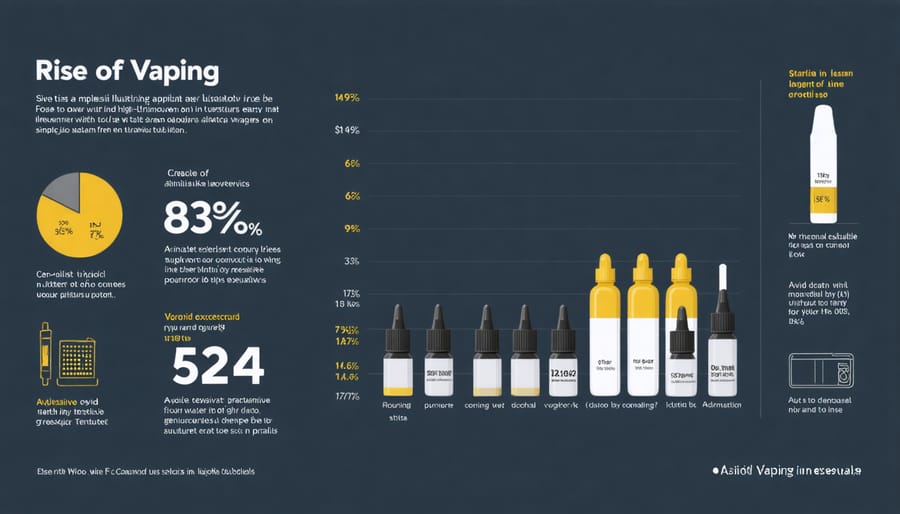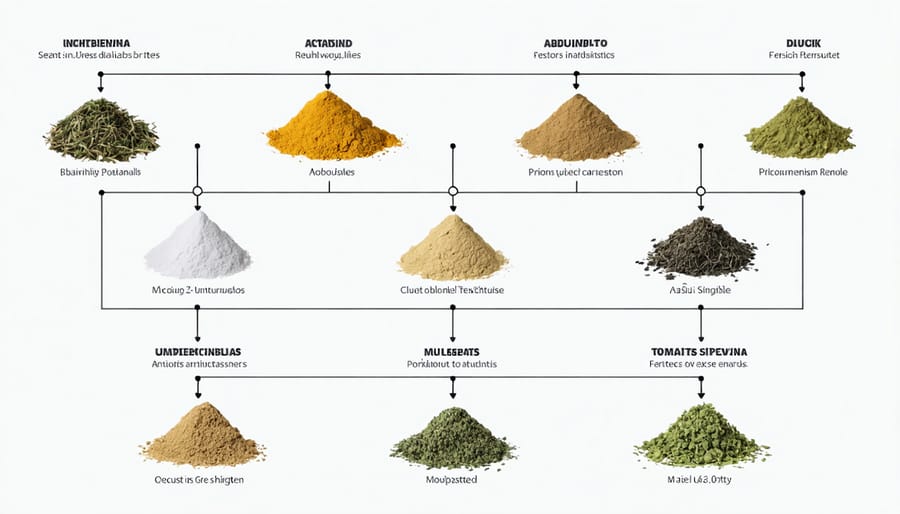As the prevalence of vaping continues to grow in Canada, understanding its implications for health and wellbeing becomes increasingly important. For those seeking information about vaping products and regulations, retailers like https://eurovap.ca/ provide resources within the legal framework. This comprehensive guide explores the current state of vaping, examining scientific perspectives, potential health implications, and the importance of making informed decisions based on current research and medical guidance.
Understanding Vaping: What You Need to Know
The Rise of Vaping
Vaping has rapidly gained popularity in recent years, becoming a notable trend, particularly in Canada. As the prevalence of vaping continues to rise, it is essential to understand its implications on health, especially for those living with cancer. In Canada, nearly 15% of adults have tried vaping at least once, with younger adults being the most frequent users. While vaping is often marketed as a safer alternative to traditional smoking, it’s important to remain cautious and well-informed. The availability of various products and flavors can make vaping seem enticing and harmless, but the reality is more complex. Community stories often highlight diverse experiences, with some individuals finding vaping helpful in their journey to quit smoking, while others express concerns about its potential health risks. For more detailed insights and evidence-based perspectives, consider exploring Vaping Facts. Understanding the nuances of vaping can empower individuals to make informed decisions, especially those impacted by cancer, their families, and caregivers.

Common Ingredients in Vaping Products
Vaping products typically contain a range of ingredients, each with potential health implications that are important to consider, especially for those living with cancer. At the core of most e-liquids are propylene glycol and vegetable glycerin. While these substances are generally recognized as safe for ingestion and topical use, their effects when inhaled remain insufficiently understood, a concern particularly relevant for healthcare professionals and cancer researchers. Nicotine, another common ingredient, is addictive and can have profound effects on heart health and blood pressure, making informed decisions about its use crucial. Flavourings in e-liquids, designed to enhance user experience, can also be concerning. Some flavour compounds, when heated, may produce harmful substances, although the extent to which this impacts cancer risk continues to be studied by Canadian researchers. While vaping is often marketed as a safer alternative to smoking, understanding these ingredients allows individuals, families, and caregivers to make informed choices regarding its safety and impact on cancer prevention.

Vaping and Cancer: Separating Facts from Fiction
Scientific Perspectives on Vaping and Cancer
Emerging scientific research is diligently exploring the relationship between vaping and cancer risk. While traditional smoking is well-established as a major cancer risk factor, the full impact of vaping on cancer development remains an active area of study. Recent Canadian research provides a nuanced understanding of this issue, emphasizing the need for clarity and careful evaluation.
One important aspect to consider is the varied composition of vaping products, which often contains nicotine and other potentially harmful substances. While some studies suggest that vaping might be less harmful than smoking, it’s crucial to recognize that “less harmful” does not mean risk-free. Early indications from Canadian researchers highlight that certain chemicals found in vape liquids could be linked to cancer. However, due to the relatively recent rise in vaping popularity, long-term data are still needed to draw definitive conclusions.
Beyond the science, individual and community stories across Canada underscore the importance of making informed choices. Many people living with cancer, alongside their support networks, are seeking evidence-based answers to navigate their health decisions effectively. It’s essential to stay informed as research progresses, maintaining an open dialogue with healthcare professionals who can provide guidance tailored to personal health contexts. This supportive community approach continues to empower individuals in their journey towards understanding and minimizing cancer risks.
Debunking Myths
Many misconceptions about vaping and its role in cancer prevention circulate within communities, and it’s crucial to address these myths with compassion and clarity. Firstly, some people believe that vaping can prevent cancer or is entirely harmless. While vaping is generally considered less harmful than smoking traditional cigarettes, it’s essential to understand that it is not a cancer prevention tool. Vaping still involves inhaling substances that could be harmful to your health, and ongoing research continues to investigate its long-term effects.
Additionally, there’s a myth that vaping can help people quit smoking entirely, which may contribute to reducing cancer risk. While some individuals have successfully transitioned from smoking to vaping, health professionals advise using approved methods for quitting smoking, such as nicotine replacement therapies or counseling services. It’s important to consult healthcare professionals for personalized advice on smoking cessation.
Promising Canadian research in this field seeks to provide clearer insights into vaping’s health impacts, ensuring that individuals living with cancer and their caregivers receive accurate information. By focusing on credible studies and community stories, we can support informed decisions that prioritize long-term well-being. Remember, reaching out to healthcare professionals and relying on evidence-based information are crucial steps in navigating these myths and making empowered health choices.
Cancer Prevention: Can Vaping Be Part of the Strategy?

Harm Reduction Strategies
Harm reduction strategies aim to lessen the negative health effects associated with smoking while acknowledging that quitting tobacco altogether can be incredibly challenging. For some tobacco users, transitioning to vaping offers a potential pathway to reduce exposure to harmful carcinogens found in traditional cigarettes. Vaping, while not without its risks, may present a comparatively safer alternative, especially when it comes to the prevention of certain cancers. In Canada, ongoing research is closely examining vaping’s role in potentially decreasing the incidence of preventable cancers. It is crucial, however, for individuals living with cancer and their families to approach vaping with caution and make informed decisions in consultation with healthcare professionals. Community stories across Canada highlight the diverse experiences of those who have shifted from smoking to vaping, offering a tapestry of insights that can guide others. It’s important to stay informed with evidence-based resources as smoking cessation continues to evolve, presenting new avenues for reducing harm and improving long-term health outcomes.
Insights from Canadian Research
Recent Canadian research has shed light on vaping and its potential implications for cancer prevention. Scientists across the country are actively exploring whether vaping may serve as a harm-reduction tool for those aiming to quit smoking—a leading cause of various cancers. In recognizing the significance of making healthy choices, researchers are focused on understanding if transitioning from traditional smoking to vaping could help minimize cancer risks.
Notably, studies have been tapping into community experiences to grasp the real-world impact of vaping compared to smoking. While vaping is not without its controversies, Canadian researchers are diligently investigating its potential as a safer alternative for those struggling to quit smoking, ultimately aiming to contribute to cancer prevention strategies.
By sharing these findings, we spotlight the contribution of Canadian research in framing conversations around vaping and cancer. It’s vital for individuals living with cancer, and their loved ones, to have access to this evolving information, empowering them to make informed and compassionate decisions about their health journeys.
Community Stories: Real-life Experiences
In the heart of Canada’s diverse landscapes, individuals facing cancer navigate a path of strength and resilience, often exploring various lifestyle changes, including the implications of vaping. Meet Sarah, a spirited 42-year-old from Vancouver, who turned to vaping after her lung cancer diagnosis. Although she once believed vaping might be a safer alternative to smoking, she soon learned from her healthcare team that the potential risks, including those to her lung health, weren’t negligible. “I wanted to make the best decision for my health,” Sarah shares. Through continuous consultations with her doctors, she adopted a smoke-free lifestyle, finding solace in being fully informed.
Then there’s James, a caregiver from Toronto, who initially used vaping as a stepping stone to help his wife quit smoking after her breast cancer treatment. “Joining a support group really helped us,” James notes, emphasizing the value of community advice and resources. They found Canadian research pivotal in understanding the nuanced relationship between vaping and cancer risks, guiding their journey towards healthier choices.
These stories underscore the importance of accessible, evidence-based information and the role of community in navigating health decisions. By sharing experiences and supporting one another, the cancer community continues to inspire informed decisions across Canada.
It’s crucial to approach vaping with a well-informed perspective, especially for those considering it as part of a cancer prevention strategy. While some studies suggest vaping may be less harmful than traditional smoking, it’s essential to recognize that vaping is not without its risks. Understanding the Canadian research landscape can help in making educated decisions. Community stories often highlight personal journeys, offering valuable insights and relatable experiences. For anyone touched by cancer, discussing options with healthcare professionals ensures choices are backed by scientific evidence and supportive care. Remember, the most effective cancer prevention measures always include informed and guided decisions.
